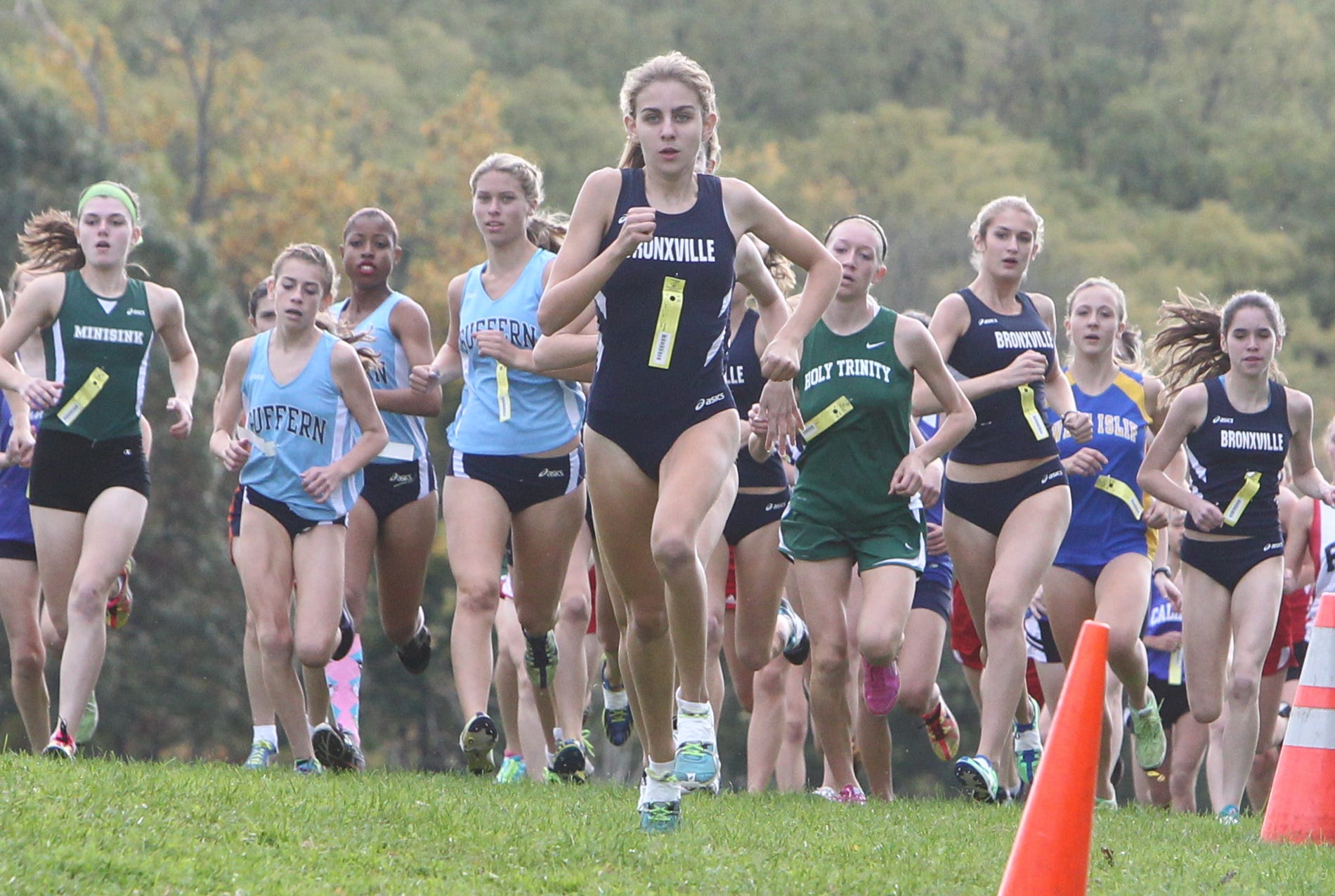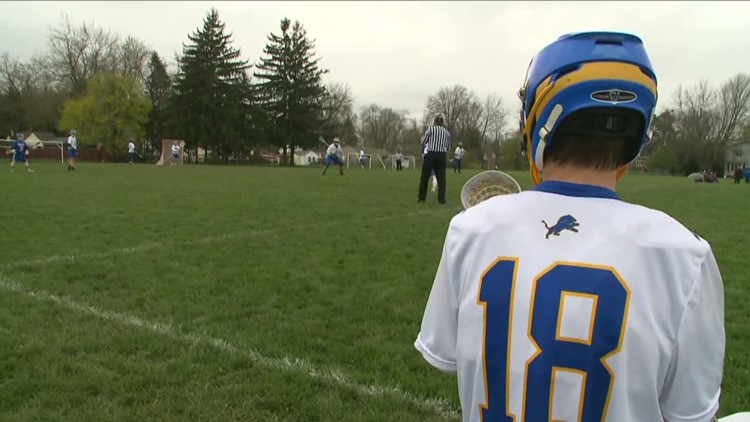The New York State Public High School Athletic Association’s Covid-19 Task Force met on Tuesday to finalize potential options for high school athletics this coming fall and winter. Six potential scenarios were discussed that could occur as a result of the COVID-19 crisis. The NYSPHSAA stresses that the proposals should serve as a “starting point” or “framework” to assist the Task Force in providing “guidance and recommendations if needed” in communications shared with athletic directors and school district superintendents across New York State this week.
They also informed their member schools that until guidance and direction is provided by Governor Cuomo and the New York State Education Department, nothing can be finalized or decided upon by NYSPHSAA. At this time, there is no definitive date for a decision to be made.

The communication shared this week also explained some of the criteria used in developing the six potential scenarios.
State Championships & Post Season
In considering the viability of NYSPHSAA State Championships and Post Season competitions the top priority shall be the safety of all associated with interscholastic athletics, followed by engaging students, with championships being a low priority. The ability of NYSPHSAA to host a state championship will be contingent upon the social distancing restrictions in place, the severity of confirmed cases in geographic regions throughout the state, the number of Sections hosting Sectional tournaments and the ability of schools to travel to a centralized location. Various solutions could be utilized for post season play; i.e. normal 11 Section Post-Season, limited Section participation, Upstate & Downstate Championships, Regional Championships only, Sectional Championships only, etc.
Fan Attendance at Games
In terms of fan attendance at high school games they cited a recent survey conducted by NYSPHSAA of nearly 6,000 superintendents, principals, athletic directors and coaches in which fan attendance rated very low in areas of importance; safety of students rated the highest. Fan attendance at games and contests will be dedicated by social distancing restrictions, local and state
health department declarations.

Other items that were considered:
– Practice requirements
– Protocol/ procedures if a student-athlete or coach becomes sick
– Screening for student-athletes and coaches
– Invitational Tournaments
– Potentially extending spring season into July
Sport Risk Assessment
They also appear to agree that each sport is different in terms of risk during the pandemic and cited the following sport risk assessment outlined in the NFHS Guidelines for Reopening Schools. This categorizes all high school sports into three different classifications based on risk.

High Risk:
Sports that involve close, sustained contact between participants, lack of significant protective barriers, and high probability that respiratory particles will be transmitted between participants.
Examples: Wrestling, football, boys lacrosse, competitive cheer

Moderate Risk:
Sports that involve close, sustained contact, but with protective equipment in place that may reduce the likelihood of respiratory particle transmission between participants OR intermittent close contact OR group sports OR sports that use equipment that can’t be cleaned between participants.
Examples: Basketball, volleyball*, baseball*, softball*, soccer, gymnastics* (if equipment can’t be sufficiently cleaned between competitors), ice hockey, field hockey, tennis*, swimming relays, pole vault*, high jump*, long jump*, girls lacrosse
*Could potentially be considered “Lower Risk” with appropriate cleaning of equipment and use of masks by participants

Low Risk:
Sports that can be done with social distancing or individually with no sharing of equipment or the ability to clean the equipment between use by competitors.
Examples: Individual running events, throwing events (javelin, shot put, discus), individual swimming, golf, alpine skiing, sideline cheer, cross country running (with staggered starts)
Potential Scenarios for High School Sports
With the above considerations in mind the following six scenarios were developed by members of the NYSPHSAA COVID-19 Task Force to address potential scenarios that could occur as a result of the COVID-19 crisis. All the proposed season start and end dates are tentative.
Scenario #1
Schools open for in-person learning; includes athletic participation.
Proposal to address scenario #1:
No changes needed. All sports played as scheduled with social distancing restrictions.
Scenario #2
Schools open with hybrid education (combination of in-person & virtual learning); includes athletic participation.
– AND –
Scenario #3
Schools only provide distance learning (virtual education); includes athletic participation.
Proposal to address scenario #2 & #3: (Season Adjustments A & B)
Depending upon the severity of the social distancing restrictions in place, sports seasons would need to be adjusted. This proposal would allow for low/moderate risk sports to be played at the beginning of the school year, with higher risk sports played towards the end of the 2020-2021 school year.
SEASON ADJUSTMENT A
Fall season
Dates: Aug. 24-Dec. 5 (Week 8-22) 15 Weeks
Sports: [LOW RISK] baseball, softball, outdoor track & field (girls & boys), golf (girls & boys), tennis (girls), swimming & diving (girls), lacrosse (girls), bowling (girls & boys). Note: Outdoor track & field would be held in the fall to separate from football, soccer, and field hockey to maximize participation at start of school year.
Winter season
Dates: Nov. 16-Mar. 20 (Week 20-37) 18 Weeks
Sports: [MODERATE RISK] basketball (girls & boys), indoor track & field (girls & boys), gymnastics, swimming & diving (boys), ice hockey, skiing (girls & boys), volleyball (girls & boys), Unified bowling.
Spring season
Dates: Mar. 15-June 12 (Week 37-49) 13 Weeks
Sports: [HIGH RISK/ MODERATE RISK] football, soccer (girls & boys), field hockey, cross country (girls & boys), lacrosse (boys), competitive cheer, tennis (boys), wrestling, Unified basketball. Note: Participation conflict with football, boys lacrosse and wrestling in the same season; facility conflict with football, boys lacrosse, soccer, and field hockey.
— OR —
SEASON ADJUSTMENT B
Fall season I
Dates: Aug. 24-Oct. 17 (Week 8-15) 8 Weeks
Sports: [LOW RISK] golf (girls & boys), tennis (girls & boys), bowling (girls & boys) cross country
(girls & boys).
Fall season II
Dates: Oct. 19-Dec. 12 (Week 16-23) 8 Weeks
Sports: [LOW RISK] swimming & diving (girls & boys), gymnastics, volleyball (girls & boys)
Winter season
Dates: Jan. 4-Feb. 19 (Week 27-34) 8 Weeks
Sports: [MODERATE RISK] basketball (girls & boys), indoor track & field (girls & boys), ice hockey, skiing (girls & boys), Unified bowling.
Spring season I
Dates: Mar. 1-Apr. 24 (Week 35-42) 8 Weeks
Sports: [HIGH RISK/ MODERATE RISK] football, soccer (girls & boys), field hockey, competitive cheer, Unified basketball.
Spring season II
Dates: Apr. 26-June 12 (Week 42-49) 8 Weeks
Sports: [HIGH RISK/ MODERATE RISK] baseball, softball, outdoor track & field, lacrosse (girls & boys), wrestling, Unified basketball.
Scenario #4
Schools open with hybrid education (combination of in-person & virtual learning); does NOT include athletic participation at start of school year.
– AND –
Scenario #5
Schools only provide distance learning; does NOT include athletic participation at start of school year.
Proposal to address scenario #4 & #5: (Condensed seasons)
With social distancing restrictions in place, sports cannot be played at the start of the school year. Instead of canceling the Fall season and start of Winter season, sports seasons will be realigned into three ten-week seasons starting in January, with game limits reduced, and the potential of having an even later start date and a further condensed season if sports are not able to begin in early January. This will provide school districts the opportunity to adapt to a new school setting before addressing extracurricular participation challenges.
Season I
Dates: Jan. 4-Mar. 13 (Week 27-36) 10 Weeks
Sports: basketball (girls & boys), bowling (girls & boys), gymnastics, ice hockey, indoor track & field (girls & boys), skiing (girls & boys), swimming (boys).
Season II
Dates: Mar. 1-May 8 (Week 35-44) 10 Weeks
Sports: football, competitive cheer, wrestling, cross country (girls & boys), field hockey, soccer (girls & boys), swimming (girls), volleyball (girls & boys), Unified bowling.
Note: Weather will have an impact upon outdoor sports in some parts of the state in March and potentially early April.
Season III
Dates: Apr. 5-Jun. 12 (Week 40-49) 10 Weeks
Sports: baseball, softball, golf (girls & boys), lacrosse (girls & boys), tennis (girls & boys), outdoor track & field (girls & boys), Unified basketball.
Scenario #6
Regional differences in start dates & learning platforms.
Proposal to address scenario #6: (Regional Differences)
With regional differences in confirmed COVID-19 cases, hospitalizations and school openings, sports seasons should be amended on a Sectional or Regional basis with the focus of engaging students to provide participation opportunities. No statewide consistency in sport seasons determined. No State Championships contested.

Decisions Coming Soon
The NYSPHSAA, parents, student-athletes, parents and fans will await decision to come this summer by Governor Cuomo and the NYS Department of Education. There remains much uncertainty as to how high school athletics will play out this coming academic year. This information obtained by FingerLakes1.com paints a picture of what high school sports could look like over the next 12 months.


